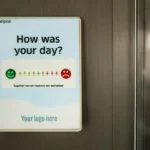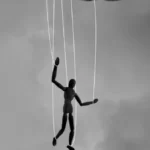Discourse analysis is a complex and multifaceted field that draws on theories and methodologies from linguistics, sociology, anthropology, and communication studies. It seeks to understand how language is not just a neutral tool for communication, but a powerful social and cultural force that shapes our understanding of the world and our place within it.
One of the central concepts in discourse analysis is the idea that language is not simply a reflection of reality, but an active agent in constructing and shaping it. Language is not just a means of conveying information, but a means of social control, power negotiation, and identity formation. Through the use of language, individuals and social groups can assert their authority, establish hierarchies, and reinforce or challenge existing social norms and ideologies.
Discourse analysis also recognizes that language is not a static entity, but a dynamic and evolving system that is constantly changing and adapting to new social and cultural contexts. It acknowledges that different social groups and communities have their own unique ways of using language, which are influenced by their shared experiences, values, and beliefs.
One of the key methods used in discourse analysis is the analysis of discursive practices, which involves examining the ways in which language is used in specific contexts and situations. This can include analyzing written texts, spoken conversations, media representations, and even non-verbal forms of communication such as gestures and body language.
Another important aspect of discourse analysis is the study of discursive strategies and tactics. These are the techniques and methods that individuals and social groups use to shape and control the meaning and interpretation of language. For example, a politician may use rhetorical devices to persuade and influence their audience, while a social movement may employ framing techniques to mobilize support for their cause.
Discourse analysis also recognizes that language is not just a tool for communication, but a site of contestation and struggle. Different social groups may have conflicting interpretations and understandings of language, which can lead to power struggles and conflicts over meaning. For example, debates over the use of inclusive language or the interpretation of religious texts can be highly contentious and reflect deeper social and ideological divisions.
Understanding Discourse
Discourse refers to the use of language within a specific social context. It encompasses not only the words we use, but also the underlying meanings, assumptions, and power dynamics that are embedded in our communication. Discourse analysis seeks to uncover the hidden structures and ideologies that shape our understanding of the world.
Discourse can take various forms, including written texts, spoken conversations, media representations, and even non-verbal communication. It is influenced by social, cultural, and historical factors, and it plays a crucial role in constructing and maintaining social order.
When examining discourse, it is important to consider the power dynamics at play. Language is not neutral, but rather reflects and reinforces existing power structures. For example, certain groups may be marginalized or excluded through the use of specific language choices or through the absence of their voices in dominant discourses.
Furthermore, discourse can shape our understanding of reality. The words we use and the narratives we tell can influence how we perceive the world and our place within it. For instance, media representations can perpetuate stereotypes and reinforce social inequalities, while language used in political speeches can shape public opinion and influence policy decisions.
Discourse analysis allows us to critically examine these underlying structures and ideologies. By analyzing the language used, the social context in which it is used, and the power dynamics at play, we can gain a deeper understanding of how discourse shapes our thoughts, beliefs, and actions.
Moreover, discourse analysis can also reveal the ways in which different social groups are positioned and how their identities are constructed through language. It can help us understand how certain discourses may privilege or marginalize specific groups, and how these discourses contribute to the reproduction of social inequalities.
Discursive Practices
Discourse analysis focuses on the discursive practices that shape and are shaped by language use. These practices refer to the ways in which language is employed in specific contexts, such as conversations, interviews, speeches, or written texts. By examining the discursive practices within a particular discourse, researchers can uncover the underlying structures, rules, and norms that govern communication and contribute to the construction of meaning.
Discursive Strategies
Discourse analysis also examines the discursive strategies employed within a discourse. These strategies refer to the deliberate choices made by speakers or writers to achieve specific communicative goals. For example, a speaker may use rhetorical devices, such as metaphor or irony, to persuade or influence their audience. By analyzing the discursive strategies used in a discourse, researchers can gain insights into the persuasive or manipulative techniques employed to shape meaning and influence interpretation.
Discourse Communities
Discourse analysis recognizes that language use is shaped by and shapes the communities in which it occurs. Discourse communities are groups of people who share common goals, values, and practices related to a particular discourse. These communities establish their own norms, rules, and conventions for communication, which influence the language used within the community. By studying discourse communities, researchers can gain insights into how language functions as a social practice and how it contributes to the construction of social identities and relationships.
Critical Discourse Analysis
Discourse analysis can also be approached from a critical perspective, known as critical discourse analysis. This approach aims to uncover and challenge the power structures, ideologies, and inequalities embedded in discourse. Critical discourse analysis examines how language is used to maintain or challenge dominant social, political, and economic systems. It seeks to expose the hidden meanings, biases, and assumptions within discourse, and to empower marginalized groups by giving voice to their experiences and perspectives.
In conclusion, discourse analysis is a multidisciplinary approach that examines the ways in which language is used to construct meaning, shape social reality, and exert power. By analyzing the key concepts of power and ideology, social construction of reality, context and intertextuality, discursive practices, discursive strategies, discourse communities, and critical discourse analysis, researchers can gain a deeper understanding of the complexities of language and its role in shaping society.
Narrative Analysis
Narrative analysis is a method that focuses on the storytelling aspect of discourse. It examines how individuals construct and convey meaning through narratives, whether in written or spoken form. This approach often involves analyzing personal narratives, interviews, or literary texts to understand how individuals make sense of their experiences and construct their identities through storytelling.
Multimodal Discourse Analysis
Multimodal discourse analysis is a method that takes into account the various modes of communication beyond just language, such as visuals, gestures, and sounds. It explores how different modes work together to create meaning and influence interpretation. This approach often involves analyzing a range of multimodal texts, such as advertisements, films, or websites, to understand how meaning is constructed through the interplay of different modes.
Socio-Cognitive Discourse Analysis
Socio-cognitive discourse analysis combines insights from social psychology and cognitive linguistics to examine how language is used to construct and convey social meaning. It explores how individuals’ social identities, beliefs, and attitudes are reflected in their use of language. This approach often involves analyzing naturally occurring conversations or written texts to uncover the cognitive processes and social factors that influence language use.
These are just a few examples of the methods and approaches used in discourse analysis. Each method offers unique insights into how language is used, and the choice of method depends on the research question and the nature of the data being analyzed. By employing these methods, researchers can gain a deeper understanding of the social, cultural, and ideological dimensions of discourse.
Social Movements and Activism
Discourse analysis has also been applied to study social movements and activism. By analyzing the language used in protest slogans, manifestos, and social media posts, researchers can gain insights into the discursive strategies employed by activists to mobilize support, challenge dominant ideologies, and bring about social change. Discourse analysis can help uncover the ways in which language is used to construct collective identities, frame social issues, and shape public discourse.
Education and Classroom Discourse
Discourse analysis has been used in educational research to examine classroom interactions and the ways in which language is used to construct knowledge, power dynamics, and social hierarchies. By analyzing classroom discussions, teacher-student interactions, and educational policies, researchers can gain insights into how language is used to reproduce or challenge existing social structures and inequalities within educational settings.
Health and Medical Discourse
Discourse analysis has also been applied in the field of health and medicine. It has been used to examine doctor-patient interactions, medical consultations, and health communication to understand how language is used to construct illness narratives, negotiate power dynamics, and shape healthcare outcomes. By analyzing the language used in these contexts, researchers can uncover the ways in which discourses of health and illness influence healthcare practices, patient experiences, and health inequalities.
Organizational Discourse
Discourse analysis has been employed in organizational studies to examine the ways in which language is used to construct and maintain organizational identities, power relations, and organizational culture. By analyzing organizational documents, meetings, and communication practices, researchers can gain insights into how language is used to shape organizational practices, decision-making processes, and employee experiences. Discourse analysis can help uncover the discursive strategies employed by organizations to maintain power and control, as well as the ways in which language is used to resist and challenge dominant organizational discourses.
Media and Cultural Studies
Discourse analysis has been widely used in media and cultural studies to examine media representations, cultural texts, and popular culture. By analyzing news articles, advertisements, films, and television shows, researchers can uncover the discursive practices that shape public opinion, reinforce or challenge cultural norms, and contribute to the construction of social identities. Discourse analysis can help reveal the underlying ideologies, power relations, and social meanings embedded in media and cultural texts.
In conclusion, discourse analysis is a versatile and valuable tool in sociology that can be applied to a wide range of social phenomena and issues. By analyzing language use and discursive practices, researchers can gain insights into the ways in which social structures, power dynamics, and inequalities are constructed, maintained, and challenged in various contexts. Discourse analysis offers a nuanced understanding of how language shapes and reflects social realities, providing valuable insights for sociological research and social change.














